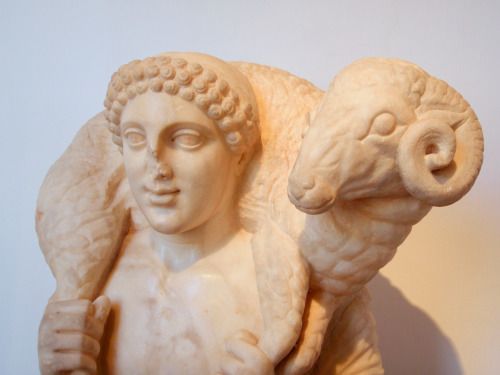
My apology of the day is to Diane Stein, the author of the ‘The Goddess Book of Days’ because of the implied error in the book in the sentence (below). Republished yesterday:
Before we read Ovid’s ‘Fasti’ first note that he locates the Day on the 16th January rather than the ‘Book of Goddesses’ which puts her on the 17th
Not only did I get the name of the book wrong (which is ‘The Goddess Book of Days’, but I had another look at what Ovid actually said and I saw this:
‘Book I: January 16
Radiant one, the next day places you in your snow-white
shrine,’
So, ‘the next day’, so Ovid agrees that January 17th is the appropriate day to honour Concordia.
Lambing
If a lamb be born sick and weak, the Shepherd shall fold it in his cloak, blow into the mouth of it and then, drawing the Dam’s dog, shall squirt milk into the mouth of it. If an Ewe grow unnatural, and will not take her Lamb after she has yeaned it, you shall take a little of the Clean of the Ewe (which is the bed in which the Lamb lay) and force the Ewe to eat it, or at least chew it in her mouth and she will fall to love a Lamb naturally. But if an Ewe have cast her Lamb, and you would have her take to another Ewe’s Lamb, you shall take the Lamb which is dead, and with it rub and daub the live Lamb all over, and so put it to the Ewe, and she will take to it as naturally as if it were her own.
Gervase Markham, ‘Cheap and Good Husbandry’ 1613 (quoted in the Perpetual Almanac by Charles Kightly.
Lambing can begin about now in the south-west, but it gets progressively later as you travel north. Itinerant shearers, now often from New Zealand, travel the country shearing sheep. They will begin in the south and then progress north.
March and April are peak lambing time in the UK, although the season runs from February to April, but some farmers even lamb before Christmas (and even November). If ewes are tupped in October, they will lamb in March. www.nationalsheep.org.uk
The country expression is ‘in with a bang and out with the fool’ which suggests an ideal time to tup, is November 5th, on Fireworks Night. So that the lambs will be born, 5 months later, around the 1st of April.
A litter is normally one or two but occasionally more. Ewe’s get fed depending on how many lambs they will be having.
In the ‘Return of the Native’, Thomas Hardy has a character called Diggory Venn, he is a reddle man. He travels the country in a little pony and trap selling reddle, a red ochre dye with which shepherds mark their flock. Part of the plot is about the reluctance of women to marry a man whose red, reddle-stained face, makes him look like a devil.
The reddle is used to mark sheep. The ram is given a collar or girdle with a marker full of reddle in it. When he mounts the ewe, she will have a red mark on her back. Once she has been tupped twice, she will have two red marks on her back, and she will be taken out of the field, to encourage the ram to impregnate the others. Reddle could also be used to mark lambs chosen for slaughter, or dipping, or weighing etc.
(Tup is a country verb: I tup. You tup, we are tupping etc, and means what happens when the ram ‘covers’ the ewe).
First, published Jan 2023, republished Jan 2024
Discover more from And Did Those Feet
Subscribe to get the latest posts sent to your email.

Very interesting facts about Sheep and lambing…
I read that the UK is the first sheep producer in Europe.
Very symbolic animals in several religions.
… We don’t often eat that meat nowadays in France, mainly lamb at Easter.